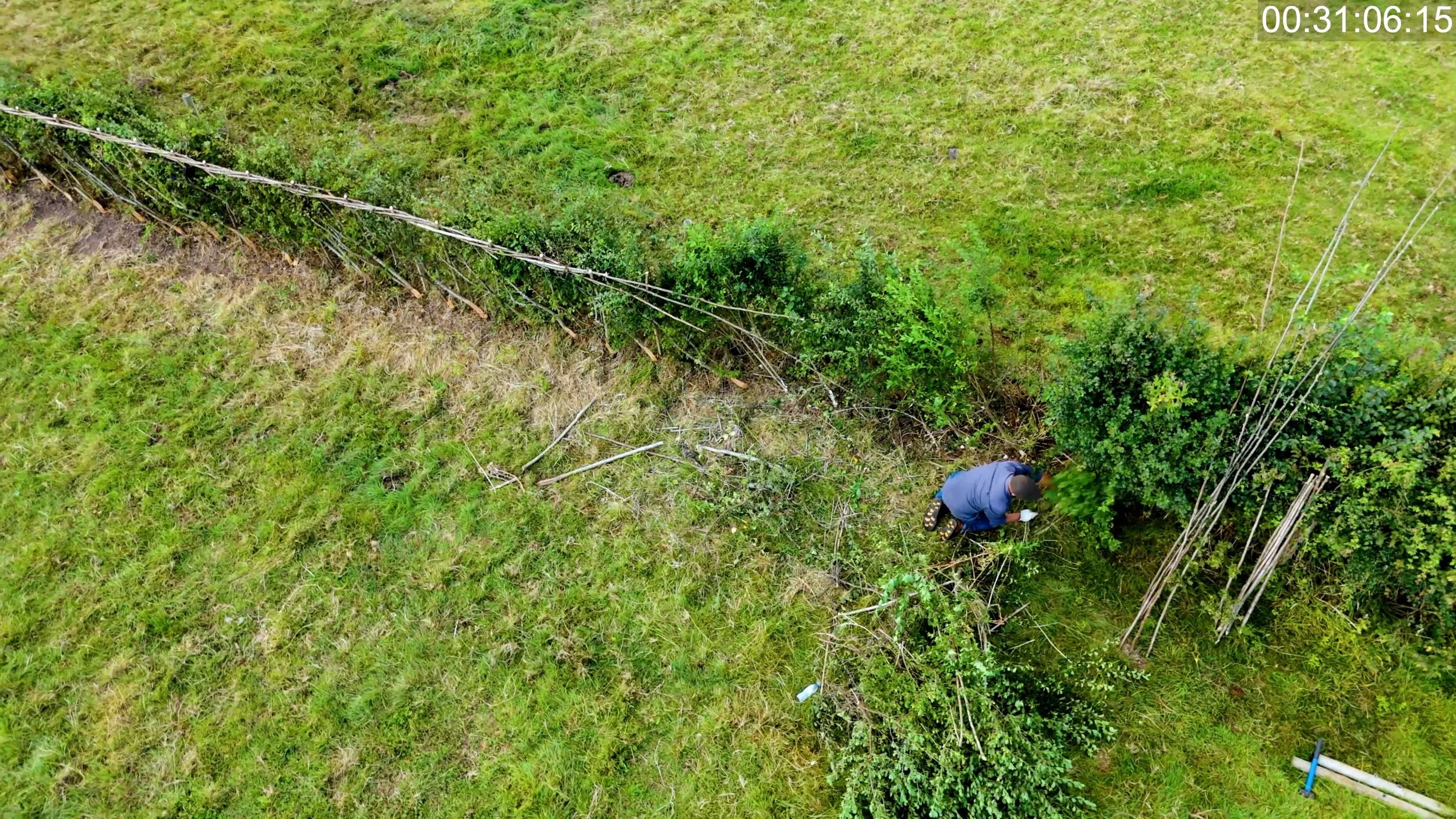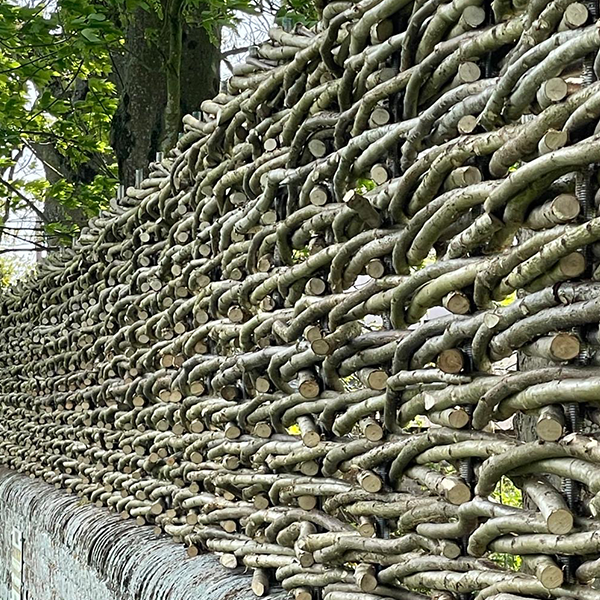
HEDGELAYING
For centuries, agricultural labourers tended hedgerows every autumn & winter to keep them thick & healthy, impenetrable to the livestock they contained.
By periodically incorporating “laying” into a hedgerows management between annual trimming, vigorous young growth was encouraged within the body of the structure. As agriculture became increasingly mechanised and intensified in the second half of the last century, this traditional practice all but disappeared. Hedgerows were removed to allow for greater ease of cultivation and those that remained often fell into decline due to improper management. During this period, a noticeable decline in biodiversity in the countryside became apparent as habitat disappeared or was degraded. As awareness of the conservation benefits of hedgerows has increased, there is once again a demand for the traditional management technique of hedgelaying.
Paul works in several, distinct hedgelaying styles and is able to both restore derelict hedgerows as well as increasing vigour and density in newly established boundaries. He is available to undertake stewardship work, private contracts and also runs training workshops each year to ensure the traditional skills needed to manage hedgerows correctly are passed on.
EXPLORE
Hedge Restoration
Hedgerows are one of the premier habitats in the United Kingdom, increasing biodiversity and providing a refuge for nesting birds, mammals and invertebrates.
A huge asset to our countryside, it is by managing and restoring hedgerows correctly that these boundaries are most beneficial to the wildlife that rely on them.
Hedge Styles
Lorem ipsum dolor sit amet, consectetur adipiscing elit.
usce sit amet fringilla sem, ac vulputate velit. Maecenas tincidunt, diam at pretium mattis, ante sem auctor odio, et dictum metus ante sed ante.
LEARN
Courses
Introduction to Hedgelaying
A practical day spent in the beautiful Welsh countryside at our stunning coastal location and incorporating all the techniques involved in laying a hedge.
Participants will learn and carry out preparations on the boundary before being guided in the proper use of traditional tools to “pleach” each stem. Once laid, participants will prepare and install stakes and finally weave the hedge with binding rods to ensure a strong and sturdy structure.
Gower, South Wales, UK
FAQs
HEDGES & HEDGELAYING
-
A hedge, or hedgerow, is a line of trees & woody shrubs planted specifically to act as a living fence or boundary marker.
-
Hedgelaying is the traditional management process for maintaining thick, healthy hedgerows. Once widespread, a decline in this form of management has seen a gradual deterioration of Britains hedgerow network. This decline correlates directly with decreasing biodiversity in our countryside.
-
Although these traditional boundaries are now rarely used as the primary means of retaining livestock, by ensuring we preserve our remaining hedgerows, we contribute to increasing biodiversity and restoring habitat.
-
Some hedgerows may be unsuitable for laying. A hedgerow that has been in decline for many years may need restoration through other methods before laying can be incorporated into its management.
-
Yes. Trimming will maintain the hedgerows structure. Between laying a trimmed hedgerow will grow horizontally rather than vertically. Improving density and its function as both a barrier and habitat.
-
Ideally, every 15-20 years and trimmed annually in between. Trimming should be done in the winter, once the wildlife had had time to benefit from the hedgerow fruits in the autumn months.
-
Yes. Different styles evolved across Britain depending on agricultural practices and personal preferences. Today, there are around thirty different styles still widely practiced.
-
I run courses predominantly in the Midland and Welsh border styles. Both are supported on a row of stakes and bound with plaited hazel rods. I also teach the Dorset/Devon and Gower styles. These are laid horizontally on top of an earth bank and remain unbound where they regenerate over coming seasons.
Contact
Whether you’re looking to restore a hedge, learn the craft, or take part in a workshop surrounded by nature, Paul would love to hear from you.
For all enquiries, bookings, or course information, please use the contact form.






